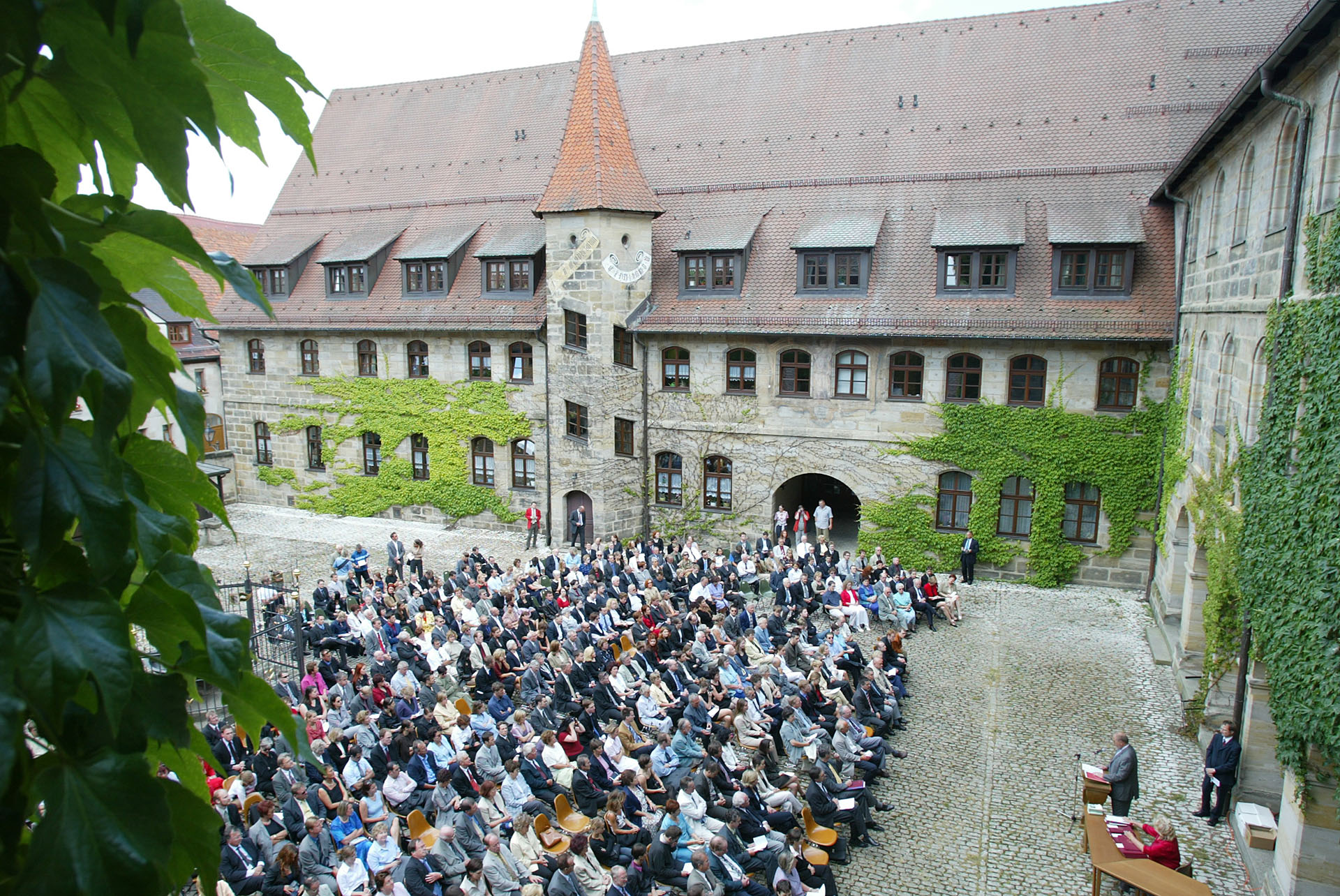400 years of University history
From Nuremberg University in Altdorf to Friedrich-Alexander-Universität Erlangen-Nürnberg

It is none other than Athena, ancient Greek goddess of wisdom, warfare and art who is depicted on an engraving from the 17th century as the figurehead of one of Franconia’s most renowned academies, an institution set to be a credit to its name in all its activities. Altdorfina, as it was known, was founded in Altdorf and located around 25 kilometers to the south east of the city of Nuremberg and counted both the Bohemian general Albrecht von Wallenstein and the scholar Gottfried Wilhelm Leibniz among its students during its 234-year history.
The aim was to bring fresh ideas to Nuremberg. The “Nuremberg University in Altdorf” developed out of a school founded by humanists and Protestant reformers. Founded as a “Hohe Schule” by the imperial city of Nuremberg, the Altdorfina publicly received university privileges and the right to confer doctoral titles in 1623 (the date on the imperial charter for these privileges is October 3, 1622) and over 19,000 students visited the university during the following 187 years.

The location outside the city gates had both advantages and disadvantages. On the one hand, it meant that students could complete their studies and live their lives (including the drinking and smoking this involved) safe from the noise and the constraints of the Franconian metropolis, but on the other, the separation from the cultural and intellectual goings on in Nuremberg was not a happy fate.
For a remarkable 121 years, the Altdorfina was the only university in the region until the Margravian Friedrich University was founded in Erlangen in 1743. After the Altdorfina was ordered to close in 1809, FAU inherited all its assets, thus becoming the academic heir of the former “Centrum Franconiae”.

Another 110 years passed until a new university was founded in Nuremberg in 1919, which naturally had the traditions of the Altdorfina in mind. The Nuremberg Commercial College, more well known nowadays as WiSo or the School of Business, Economics and Society, professionalized the occupation of the honorable merchant and experienced some tumultuous times during the 20th century similar to those experienced by Nuremberg University in Altdorf during its hundreds of years of history. Finally, a university education according to the tradition of Altdorfina relocated to the center of Nuremberg.
Up until the 2000s, WiSo emphasized these close ties by holding an annual graduation ceremony in Altdorf. This tradition only came to an end when the number of graduates at WiSo was so high that it became impossible to hold the ceremony in Altdorf. Even today, WiSo still feels a close connection with its roots in Altdorf.
The incorporation of WiSo into FAU in 1961 meant the circle linking Altdorfina, WiSo and FAU finally closed. This year marked the year in which WiSO became a faculty of FAU. Today, FAU and its locations in Nuremberg and Erlangen are attractive places to live and study in the heart of both cities.
On October 3, 2022, FAU and WiSO will celebrate the 400th anniversary of the founding of Nuremberg University in Altdorf.